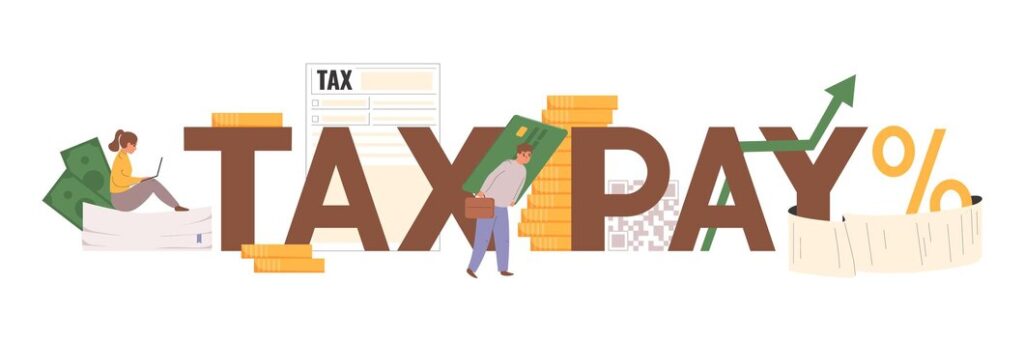Key Takeaways
- The GST Bill introduces a unified tax system, replacing multiple indirect taxes.
- Purpose of GST: To simplify the tax structure and eliminate the cascading effect of taxes.
- Features include destination-based taxation, multi-stage tax application, and dual GST (CGST, SGST, and IGST).
- Impact on Businesses: simplifies tax compliance and facilitates smoother inter-state transactions.
- Updates and Changes: Regular rate revisions, e-invoicing introduction, and simplification of compliance procedures.
- Information and Registration: Available on the official GST portal (www.gst.gov.in).
GST in India stands for Goods and Services Tax. It is a comprehensive, multi-stage, destination-based tax that is levied on every value addition in the supply chain. Introduced on July 1, 2017, GST replaced many existing indirect taxes that were previously imposed by the central and state governments, such as value-added tax (VAT), service tax, excise duty, etc.
This reform aimed to streamline the tax structure in India, making it simpler and more efficient by eliminating the cascading effect of taxes on goods and services. The GST is multi-stage because it is imposed at every step of the production process, from manufacture to sale to the end consumer. However, it is designed to be refunded to all parties in the various stages of production other than the final consumer, ensuring that the final tax burden is borne by the end consumer alone.
Being destination-based, GST is charged at the point of consumption rather than the point of origin, which means that the tax revenue is collected by the state where the goods or services are consumed, not where they are produced.

GST Stages
GST (Goods and Services Tax) in India is a comprehensive, multi-stage, destination-based tax that is levied on every value addition in the supply chain of goods and services. Here’s a breakdown of what this means:
- Comprehensive: GST encompasses and replaces several previously existing indirect taxes in India, including but not limited to, Central Excise Duty, Service Tax, VAT (Value Added Tax), and several other state-level taxes. This makes GST a singular tax system that aims to bring about tax uniformity across the country.
- Multi-Stage: The term “multi-stage” refers to the fact that GST is applied at every stage of the production process. From the procurement of raw materials to the final sale to the consumer, GST is levied on the value added at each stage, ensuring that the tax is distributed fairly among the different stages of production and distribution.
- Destination-Based: GST is “destination-based,” meaning it is charged based on the location of the consumption of goods and services rather than where they are produced. This principle ensures that the tax revenue accrues to the state where the goods or services are actually consumed, aligning tax collection with consumption patterns and benefiting states with higher consumption rates.
The Journey of GST in India
The Goods and Services Tax (GST) implementation in India represents a historic change to the fiscal policy environment of the nation, the result of years of preparation, discussion, and consensus-building among many stakeholders. An outline of the significant turning points in the creation and use of GST and GST returns in India is provided below:
| Year | Milestone | Details |
|---|---|---|
| 2000 | GST Proposal | GST idea first proposed by the Vajpayee government. Asim Dasgupta committee formed to design a GST model. |
| 2004 | Kelkar Task Force | Recommended a comprehensive GST based on the VAT principle. |
| 2006 | Union Budget Proposal | Finance Minister P. Chidambaram proposed April 1, 2010 as the GST rollout date. |
| 2008 | First Discussion Paper | Released by the Empowered Committee of State Finance Ministers, outlining the proposed GST regime. |
| 2011 | 115th Constitutional Amendment Bill | Introduced to enable GST but lapsed. |
| 2014 | 122nd Constitutional Amendment Bill | Introduced in the Lok Sabha in December 2014 by the new government to push for GST. |
| 2016 | 101st Constitutional Amendment Act | Constitution (122nd Amendment) bill passed and ratified, becoming the Constitution (101st Amendment) Act, enabling GST’s introduction. |
| 2017 | GST Implementation | GST laws finalized and implemented on July 1. midnight session of Parliament marks the official launch. |
| 2017-2024 | Post-Implementation Adjustments | Several rate revisions, clarifications, and procedural adjustments; the introduction of e-invoicing, and new return filing system. |
| COVID-19 Era | Relief Measures | Deadline extensions and rate cuts on essential goods and services are part of COVID-19 relief measures. |
GST Bill India Explained?
The Goods and Services Tax (GST) Bill, formally known as the Constitution (One Hundred and First Amendment) Act, 2016, in India, is the legislative framework that introduced the Goods and Services Tax (GST) system in the country.

GST represents a single, unified indirect tax system that is levied on the manufacture, sale, and consumption of goods and services nationwide. It aims to consolidate multiple indirect tax levies into a single tax, thereby simplifying the tax structure and making it more transparent and efficient.
In order to replace a number of previous taxes, including the Value Added Tax (VAT), Service Tax, Excise Duty, and extra customs levies, the GST Bill was essential to the introduction of the GST system. The bill describes the GST’s tax rates, rules, and regulations, as well as the framework for its administration and collection throughout India.
What are the components of GST?
GST in India is categorized into three types:
- Central Goods and Services Tax (CGST): Levied by the Central Government on intra-state sales (within the same state).
- State Goods and Services Tax (SGST): Levied by the State Government on intra-state sales.
- Integrated Goods and Services Tax (IGST): Levied by the Central Government on inter-state sales (between two states) and imports.
The GST Bill was needed to eliminate the cascading effect of taxes (tax on tax), simplify the tax regime, enhance compliance, and create a single, unified Indian market, thereby boosting the economy and increasing the ease of doing business. It represents a major shift in India’s tax structure, aiming at more direct tax collections and a simplified tax policy landscape.
Key Features of the GST Bill
- Unified Tax System: GST replaced a myriad of central and state taxes such as the Value Added Tax (VAT), excise duty, service tax, and sales tax, merging them into a single tax system to reduce complexity and make the tax regime more transparent and efficient.
- Multi-stage Taxation: GST is levied at every step in the production process but is refunded to all parties in the various stages of production other than the final consumer. This ensures that the final consumer bears the GST charged by the last dealer in the supply chain, with set-off benefits at all the previous stages.
- Destination-Based: Unlike the previous taxes, which were levied where goods and services were produced, GST is levied at the point of consumption. This means that the state where goods are consumed will collect the tax revenue.
- Dual GST: India has adopted a dual GST model, meaning that both the central and state governments will levy tax on goods and services. This is categorized into Central GST (CGST), State GST (SGST) for intra-state movement, and Integrated GST (IGST) for inter-state supplies and imports.
Impact of the GST Bill
- For Businesses: The introduction of GST has significantly reduced the complexity of tax compliance, integrating multiple taxes into one. It has also facilitated the seamless movement of goods across state boundaries, reducing transit times and logistics costs.
- For the Economy: GST has been touted as a potential game-changer for the Indian economy by creating a single national market, improving tax compliance, and reducing economic distortions caused by the previous indirect tax system.
- For the Government: With a broader tax base and better compliance, GST has the potential to increase government revenues, which can be used to fund public welfare programs and infrastructure development.
Why is a GST bill needed?
The Goods and Services Tax (GST) Bill, which was necessary for a number of significant reasons, drastically altered India’s indirect tax system. Prior to GST, the Indian tax system was fragmented and complex, with a plethora of state and central taxes that were not only cumbersome to manage but also inefficient and economically burdensome for both businesses and consumers.
The need for the GST Bill arose from various critical issues inherent in the pre-GST tax regime:

- Elimination of Tax-on-Tax (Cascading Effect): One of the most significant reasons for the introduction of the GST Bill was to eliminate the cascading effect of taxes, where tax was levied on tax throughout the value chain. This not only inflated prices for consumers but also created inefficiencies in the economy.
- Simplification of the Tax Structure: With the presence of multiple taxes such as VAT, Excise Duty, Service Tax, etc., the tax structure before GST was exceedingly complicated for taxpayers. Compliance was a nightmare due to the varied regulations across states.
In order to streamline this structure into a single, unified tax system that would be simpler for companies to comply with and the government to manage, the GST Bill was required.
- Boosting the Economy: A unified market is more competitive and efficient. India took a step toward a unified national market with the passage of the GST Bill. Due to the removal of financial barriers between the states, there may be a rise in trade and industry, which would promote overall economic expansion.
- Increasing Tax Compliance and Revenue: The complexity and multiplicity of the previous tax system led to low compliance levels and tax evasion. The GST system, with its input tax credit mechanism, encourages tax compliance, as businesses can only avail tax credits if their suppliers have complied with their tax duties. This system increases overall tax compliance and, consequently, government revenue.
- Promoting Competitive Business Environment: The GST Bill has leveled the playing field for businesses across the country by ensuring that the tax structure is uniform. By doing this, the tax advantage that companies in some states could have had due to reduced local taxes or VAT is eliminated, promoting a more vibrant and competitive economy.
- Enhancing Efficiency in Logistics: Before GST, the interstate movement of goods was subject to various state taxes, leading to long queues at state borders. GST, being a destination-based tax, has eliminated the need for multiple state taxes, thereby reducing transit times and logistics costs and further contributing to the efficiency of the national market.
- Adapting to Global Standards: Many countries around the world have successfully implemented a GST or VAT system. By adopting the GST Bill, India aligns its tax system with global best practices, facilitating easier trade and investment from foreign entities.
GST Bill : Changes and Updates
Since its inception in 2017, the GST regime has undergone several changes and updates to address concerns from various sectors and to simplify compliance. These updates cover amendments in tax rates, compliance procedures, and relief measures for small and medium enterprises.
Key Changes and Updates to the GST Bill
- Rate Revisions
The GST Council periodically revisits the tax rates on various goods and services to reflect economic realities and address industry concerns. Recent revisions have seen a focus on reducing rates for essential goods and services to ease the burden on consumers and support small and medium-sized enterprises (SMEs).
- Simplification of Compliance Procedures
Recognizing the challenges faced by businesses in complying with GST regulations, the government has introduced measures to simplify the filing process. This includes the introduction of a new, simplified return filing system aimed at making compliance easier for smaller businesses.
- Input Tax Credit (ITC) Rules Tightened
To curb misuse and improve compliance, the rules surrounding Input Tax Credit have been tightened. Businesses now face stricter scrutiny and timelines for claiming ITC, ensuring that only legitimate claims are processed.
- E-Invoicing
The adoption of electronic invoicing (e-invoicing) for B2B transactions has been a significant update. Initially mandated for larger companies, the threshold for e-invoicing has been gradually lowered, bringing more businesses under its ambit. This move aims to reduce tax evasion and make tax administration more efficient.
- GST on Online Gaming, Casinos, and Horse Racing
In a move to bring more activities under the GST net, the council has clarified the applicability of GST on online gaming, casinos, and horse racing, specifying the rates and conditions under which these services will be taxed.
Current Statistics: A Glimpse into GST’s Impact
- Revenue Collection: GST collections have seen a steady rise, with monthly collections consistently crossing the ₹1 lakh crore mark, indicating a robust recovery and compliance improvement.
- Tax Base Expansion: The number of registered GST taxpayers has seen significant growth, reflecting the widening of the tax base and the success of GST in bringing more businesses into the formal economy.
- Ease of Doing Business: With the simplification of tax structures and compliance processes, India has seen an improvement in its Ease of Doing Business rankings, attributable in part to the GST reforms.
- State Compensation: To address concerns from states about potential revenue losses due to the transition to GST, the central government has provided compensation to states, ensuring that no state is at a loss due to the implementation of GST.
Impact on the General Public

The impact of GST on the general public has been significant, affecting prices, tax compliance, and the overall economy. While it has led to increased transparency and ease of doing business, there have been challenges in terms of compliance and understanding the new system.
| Impact Area | Description |
|---|---|
| Consumer Prices | Varied impact: Some goods and services became cheaper due to reduced tax rates, while others saw a price increase due to the unified tax structure. |
| Tax Transparency | Increased transparency: Consumers can now see the tax component on goods and services more clearly, leading to better awareness and understanding. |
| Compliance | System simplification: By easing the burden of taxes brought on by inefficiencies, the streamlined procedure has made it simpler for businesses to comply with tax laws. |
| Market Competition | Enhanced competition: A uniform tax structure across states has leveled the playing field, potentially leading to better prices and quality of goods and services for consumers. |
| Product Availability | Improved logistics and reduced interstate barriers have led to better product availability across states, providing consumers with more choices. |
| Inflation Control | Mixed effects: Initial implementation saw a temporary spike in inflation in some sectors; however, over time, GST aims to stabilize prices and contribute to overall inflation control. |
| Government Services | With increased tax compliance and revenue, the government can potentially enhance public services and infrastructure, indirectly benefiting the general public. |
Conclusion
India’s GST Bill represents a significant shift in the country’s taxation policies with the aim of establishing a more simple, transparent, and efficient tax system. Though there have been implementation challenges and the need for adjustments to address objections from various sectors, overall, the economy, businesses, and consumers are deemed to benefit from the GST.
With the government constantly modifying the system to improve it and meet the demands of a changing economy, the GST journey in India is one that is still ongoing.
💡To explore how Pice business payment application can help you manage all your business payments (GST, vendor, rent, etc.) from one place and with credit card payment. Request a demo now.
FAQs
What is the GST Bill?
The GST Bill, formally known as the Goods and Services Tax Bill, is a legislative measure introduced to implement a uniform tax structure across India, consolidating numerous central and state taxes into a single tax system. This bill aims to eliminate the cascading effect of taxes, thereby creating a common national market and enhancing the efficiency of tax collection. By simplifying the tax structure, it seeks to make the process more transparent and increase compliance, significantly impacting the economy and business operations.
Why was the GST Bill needed?
The GST Bill was needed to address the complexities and inefficiencies of India’s fragmented tax system, which included multiple indirect taxes levied by both the central and state governments, leading to a cascading effect of taxes. This multiplicity of taxes increased the cost of goods and services, hindered seamless inter-state commerce, and complicated compliance for businesses. Implementing GST aimed to streamline the tax structure, reduce the overall tax burden, and foster a unified national market, thus enhancing economic growth and simplifying the business environment.
How has the GST Bill impacted businesses and the economy?
The GST Bill has significantly impacted businesses and the economy by streamlining tax compliance, reducing the multiplicity of taxes, and eliminating the cascading effect, leading to a more transparent and efficient tax system. For businesses, it has facilitated easier interstate movement of goods and simplified the tax structure, potentially lowering costs and encouraging investment. Economically, GST has aimed to increase government revenue, boost GDP growth, and foster a unified national market, contributing to overall economic stability and efficiency.
What are some significant changes and updates to the GST regime?
Since its inception, the GST regime has seen several significant changes and updates aimed at simplifying compliance and making the tax system more business-friendly. These include the introduction of a simplified return filing process, the reduction of tax rates on various goods and services, and the exemption of small businesses from GST registration based on turnover thresholds. Additionally, the government has implemented measures like the e-invoicing system for better tax compliance and fraud prevention, and continuously refined the tax slabs to address the concerns of various stakeholders and adapt to the evolving economic landscape.
How does GST impact the general public?
The GST impacts the general public primarily by potentially altering the prices of goods and services, with some items becoming cheaper due to the removal of the cascading tax effect, while others may become more expensive. It aims to create a more transparent tax system, where the final consumer is aware of the exact tax rates applied to the products and services they purchase. Additionally, the efficiency and uniformity brought by GST can lead to improved economic growth and stability, indirectly benefiting the public through increased job opportunities and government revenues for public services.
Where can businesses and individuals find more information or register for GST?
Businesses and individuals in India can find more information about GST, including registration procedures, tax rates, and compliance guidelines, on the official GST portal (www.gst.gov.in). This online platform serves as a comprehensive resource for all GST-related services, including registration, tax payment, return filing, and application for refunds. Additionally, the portal provides educational materials, updates on new notifications, and circulars to help taxpayers stay informed about the latest developments in the GST regime.








